Here are some common questions students ask about our school and studying martial arts in general.
What are the martial arts?
The martial arts, meaning military, warlike, or fighting arts, include all systems of combat, particularly those stemming from the Asian countries. A martial art, ideally, means any fighting discipline, either with or without the use of weaponry. Each nation has its own specific martial art, or several of them. China’s martial art is Wu Shu, better known to Westerners as Kung-fu. The Okinawan martial art is know overall as Karate and is subdivided, much like kung-fu, into dozens of branches. Arts like Judo and Jiu-Jitsu, which came before Karate, are two of the national martial arts of Japan. Western boxing and wrestling could rightly be called the martial arts of the United States.
Why should I train in the martial arts?
Martial Arts is intended to teach the following essentials: Character, self-control, combative techniques, health consciousness, and self-confidence. Practicing the arts has many benefits. Some are obvious. Learning to defend yourself grants self-confidence and helps to eliminate stress and fear. Exercising regularly improves your fitness level and can help to lose extra pounds. With a student’s sincere and prolonged commitment to achieve real change, the cumulative effects of martial arts can produce a happier, healthier life.
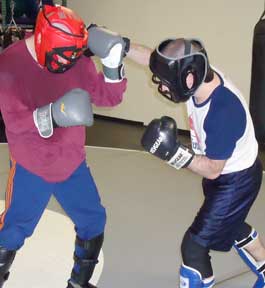
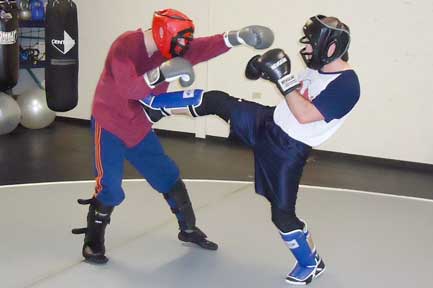
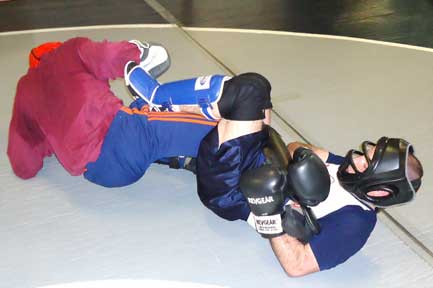
Where are the classes held?
In Bellingham, Washington near Western Washington University. Call 360-676-9909 for exact directions.
When are the classes held?
There are no longer classes open to the public. All sessions are private lessons or corporate trainings.
How much does it cost?
Single client private lessons =$110 per hour ($30 each additional 1/2 hr)
Two-to-five clients for a group training session = $100 per hour ($20 each additional 1/2 hr) *
* In-person Group Training will incur a nominal $5 cleaning fee per person
Does Unbridled Martial Arts incorporate formalities such as bowing?
As it pertains to the martial arts, bowing is equivalent to the Western custom of shaking hands, and it does not bear any religious overtones in most systems. When entering or leaving a martial arts school, a student may bow to show respect for the place of learning. Once inside the school, students may bow to the instructors and other students both to show respect and as a greeting. Unbridled Martial Arts is a practice without boundaries, without ritual, without convention, so that martial arts skills can be purely evaluated and absorbed on a strategic and tactical level. Acts such as meditation have considerable merit in helping dispel irrelevant thoughts and sharpen concentration. Bowing is a valuable practice that instills humility and courtesy in students and teachers. As much as the practice of meditation and customary salutations are significant traits, we do not devote time to them. In my opinion; they are not necessary for an adult’s general education in martial arts.
Does Unbridled Martial Arts use a Belt system for its students?
Many schools of Martial Arts use a system of colored belts to organize levels in the learning process; beginner, junior, intermediate, advanced. The colors generally graduate from light to dark, reflecting the duration spent engaged in the art. Often schools have a testing day that judges a student’s expertise and knowledge before they are allowed to progress. Students sometimes get far too wrapped up in earning belts and titles. UMA prefers not to use this approach and would rather the student focus all their attention on the journey than the destination. In my background of Karate (two words, kara – te, “empty” “hand”) this perspective would take us back to when Karate was only referred to as Te. Karate was not originally systemized with levels and practitioners of the art all wore white belts. Training was done for training’s sake, and the white belts over time turned black from the hard, sweaty, grimy work. It is my strong opinion, any school that you walk into, if instruction is delivered with integrity, if you stripped away the color, you should be able to tell who is experienced and who is not. Much the same way a new employee at a workplace can readily figure out who the seasoned, professional co-workers are and follow their example.
How do you determine the level at which a student is learning?
I don’t. The student does. At times I may divide a class into Beginner, Intermediate, and Advanced. You select which category you belong in. You are free to learn at whatever pace you want and whatever level is comfortable for you. It will become obvious if you are not being challenged or if you are in over your head.
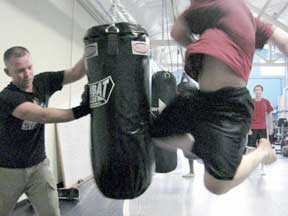
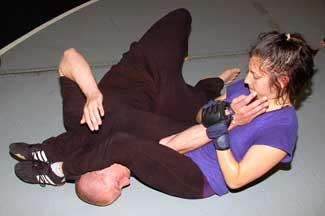
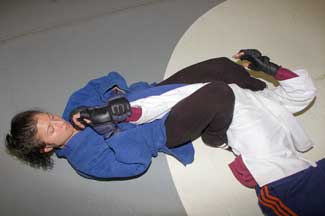
What language do you use for terminology when teaching class?
Sometimes a particular technique will be referenced in its indigenous language. For the most part, everything is directed and identified in English. I love traditional Karate. Everything in Karate is instructed in Japanese (the same way ballet lessons are done in French). Front kick = mae geri. Reverse punch = gyaku tsuki. I saw that this actually slowed down the learning process and did not have any merit on the execution of the movements. New students continually had to translate directions in their minds before they could make a move. It’s fun to learn another language but I am interested in people being able to instantly comprehend instruction without any added complications. I am not advocating condensed or accelerated training. I am steadfastly in favor of making the most of our increasing limited and valuable training time and for the busy American student, using English terminology makes more sense.
Aren’t you doing a disservice neglecting some of these vital cultural traits inherent in martial arts practice?
Although there may be a lack of traditional customs in UMA there is certainly not a lack of respect, courtesy, and discipline, which are the important qualities of the martial arts experience. I am 100% American. Why would I try to replicate within a classroom another culture that I didn’t happen to grow up in? Of course, my martial arts upbringing was done within the walls of Traditional Japanese Dojo(s). Therefore, through that influence, I have incorporated certain Japanese attitudes and formalities into my personal daily life. Yet, in my past, each time I exited the school I had to readjust to the culture of American society in which I participate in. I have never lived in Japan. I have only traveled to Japan, so I cannot behave as though I know their culture inside and out, or the full implications and context of their language.
I don’t see a point of replicating something unfamiliar for my students who have to function in this society. Why shouldn’t I just teach what I live and breathe from my own life experience and vantage point? That point would be from the perspective of an American teen to an American adult who intimately knows service and sacrifice, and has learned through the study of martial arts how to conduct himself in a productive, positive manner.
Will I become proficient in the martial arts?
Over time: absolutely. I am approachable and if you have questions I am free to answer them. I will admit if I don’t know something. Best of all, if I don’t know something I will research it and find out.
What style or system do you teach?
This subject has been addressed in the “What is UMA?” section. I just like to say I train and teach modern martial arts. I know that sounds very generic. It keeps it simplified. I have a wide background in different arts. Therefore, I would like the program to be multicultural and not pigeonhole its identity to one region, culture, or style.
How would you describe your style of teaching?
Teachings are based on science and circumstance. One thing does not work straight across the board at all times. A style can become limiting if you only adhere to what is historically contained within it. All styles have underlying principles and a block from Chinese Wing Chun can be identical to another found in, for instance, Indonesian Silat. I am not handpicking components from every different artform and assembling them together to create some new system. Instead, I like to identify the circumstance of what needs to be achieved and then select the best tool scientifically proven to accomplish the deed.
Again, let me reiterate, one particular technique does not work for everybody, simply because everybody is not built the same, and everybody has different attributes. We all aspire to become stronger, faster, smarter. As we are on the uphill climb to better our body and mind, there are always people further ahead than we are. There is always somebody stronger, somebody faster, someone more experienced and more clever. That is why, for example, no matter how much you perfect that outside block there is eventually going to be a powerhouse puncher with arms of steel that drives right through your defenses. Are you going to keep attempting to match your strength against his? Maybe you aren’t stronger. Perhaps you are quicker. Instead of fighting fire with fire, why not use your existing attribute of speed and get out of the way?
Maybe that answer explains a “stylistic” attitude, more than just a “style”. Please refer to my bio page and you will see the influences and art forms I have participated in. If you recognize them, then you probably know what my practice is like.
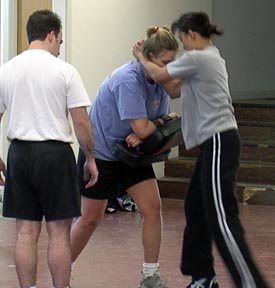
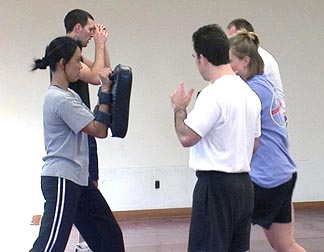
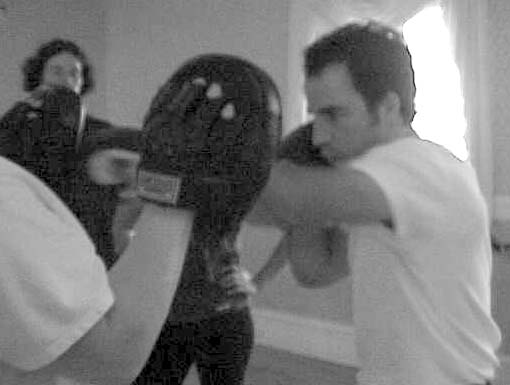
Can I still maintain my style training in the UMA School?
Students are encouraged to cross train. UMA promotes a community of sharing and learning from one another. I don’t feel any of my lesson plans should conflict with your training if you are a student pursuing effective combative principles and techniques. Believe me, good information does not replace other good information. If something introduced in a UMA class makes you reevaluate your arts’ effectiveness or identifies a weakness, it might signify an area that needs work. A significant part of martial training is identifying weaknesses in ourselves and dedicating ourselves to the work needed to strengthen those points.
Are there uniforms?
Nope. Just come in normal workout attire. (see “Equipment & Attire” in Rules & Regulations)
Do I need to bring equipment?
At a minimum you must bring hand wraps. (Again, see “Equipment & Attire” in Rules & Regulations) As you will discover, the great thing about martial arts… not much is needed.
Practice it anywhere (anywhere you feel comfortable, that is). It can be done solo or with a partner, with a lot of gear or none at all (depending on the desired level of intensity).
To free-spar and free-roll, you must have a mouth guard and males need a groin protector.
To stick-spar in the weapons class, you need to purchase a safety stick and have proper head and hand protection.
How often should I practice?
The school is operated three nights a week. I advise training an additional day or two on your own. Two to three days a week is sufficient for beginners. You will be learning new material all the time and you will need time outside of practice to assimilate all the information. Make time the next day after a session to review on your own what you remember. This will help your muscle memory and give you time to work independently. As you become more proficient, you may wish to practice every day. Definitely devote time to stretching every day.
Aside from the physical skills, what is the one main attribute you want people to learn from training?
If I had to pick just one? That would be tough. Really, there are TWO characteristics I would want people to get out of my lessons.
The first would have to be self-control. That is what I want the entry level participant to learn. And that would be control on several levels: emotional, physical, mental. And that doesn’t mean a cold detachment from your feelings. I always say you should feel everything to the fullest, but only express what you choose to the fullest.
The second is a vital characteristic to have, and would be something for the experienced student to have: tenacity. Through hard work and dedication, I want my students to develop their tenacity to an unyielding degree. Having that will allow them to achieve anything they set out to do. It is a fierce, powerful attribute that can help even the most inexperienced fighter succeed. Tenacity is crucial. It can save your life. The best thing is that the process of developing it doesn’t cause any emotional baggage, because it doesn’t need to stem from a place of hate or anger. I had a dog when I was a kid that was the embodiment of tenacity! He loved playing fetch with socks, but after a sock was thrown one time he wouldn’t let it out of his mouth and then it became a tug-o-war. I could raise the sock up into the air and this little dog would hang from it, teeth clenched tight. Case in point, this dog didn’t have any driving force such as hate or anger that allowed him to achieve this feat. To him, it was purely that it was his sock and he wasn’t letting it go and he wasn’t giving it up. This is what I would want to inspire in my students, regardless of how well they can physically kick or punch.